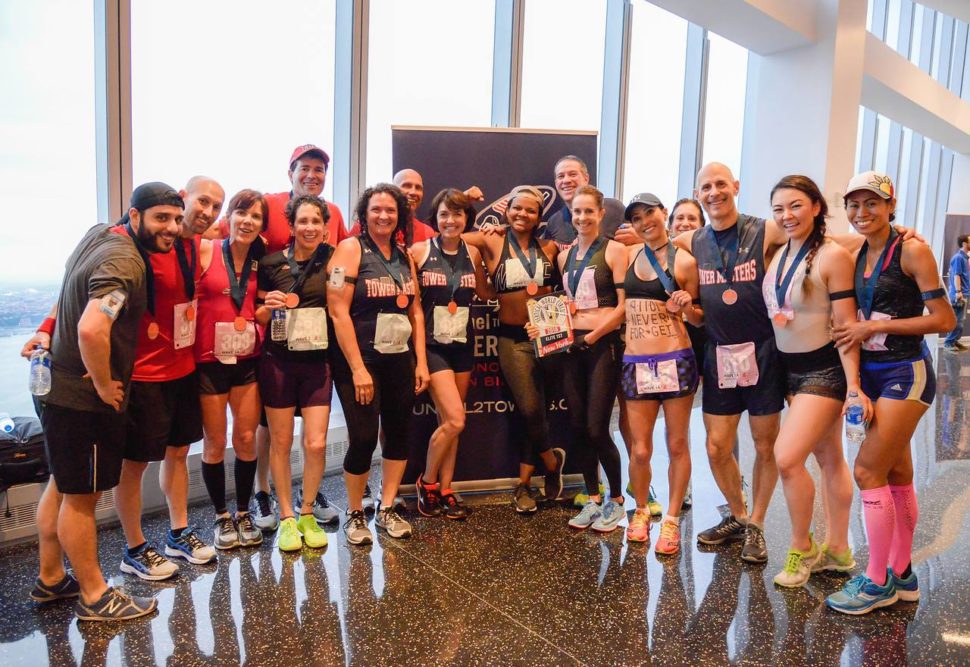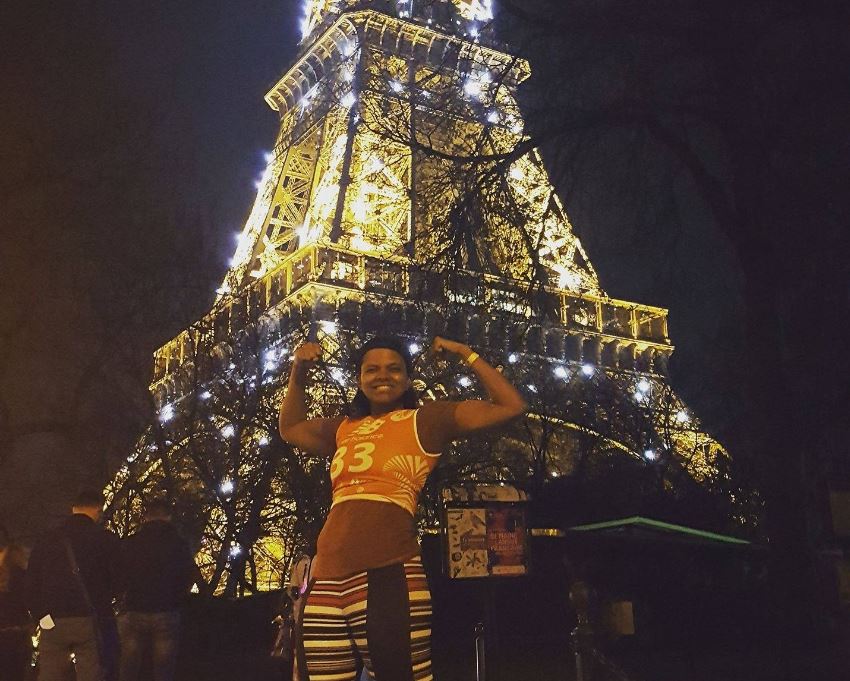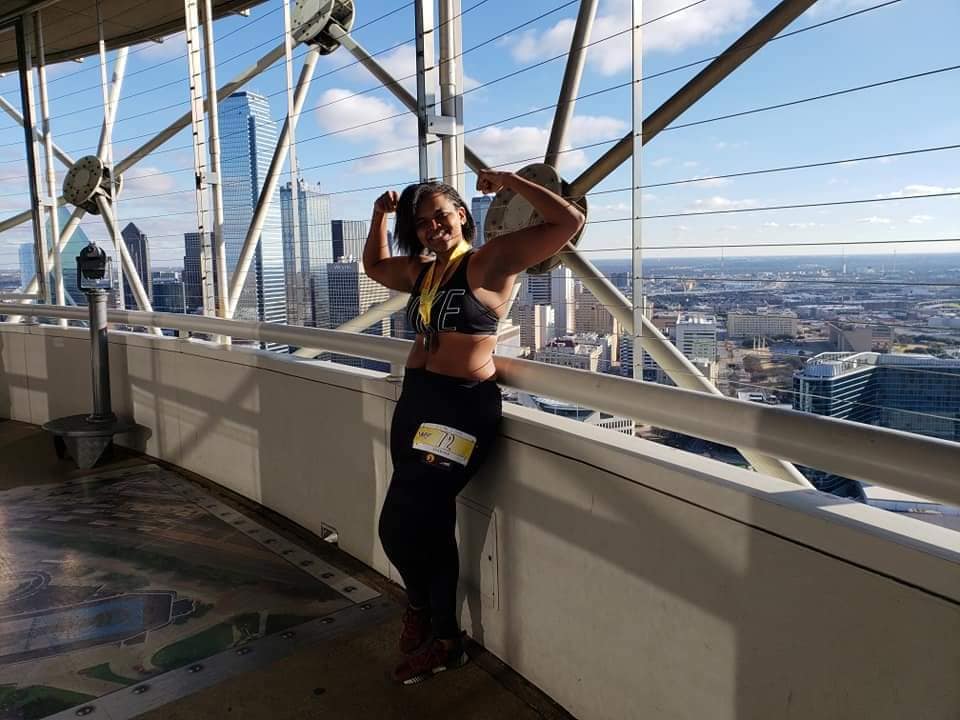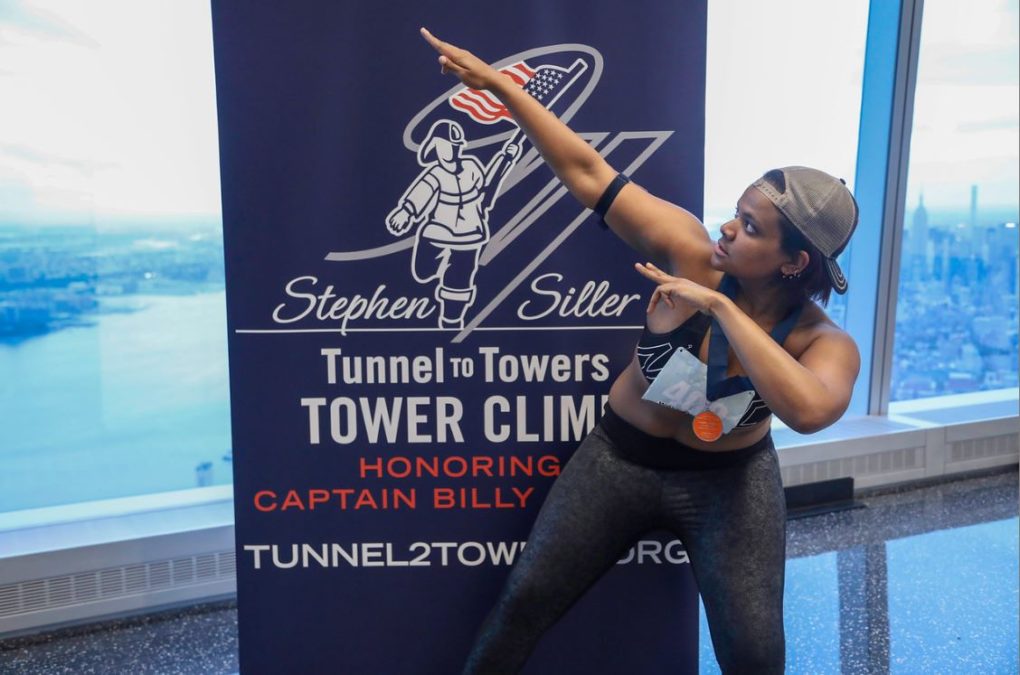When I say that I’m a tower climber, I let that linger a few seconds before clarifying exactly what I mean. I don’t scale structures from the outside like Spiderman, I race up hundreds of steps for the love of sport. I’ve traveled to a handful of different cities specifically for that purpose, which confuses and intrigues some people. Why subject myself to this if there isn’t some kind of monetary reward?
The rewards, at least for me, are more valuable than money. The bizarre experiences. The fitness benefits. The friends or “step-siblings” I’ve made. The bragging rights which come with conquering iconic structures, powered by strength, determination and probably a touch of insanity. That said, there are people who are much faster than me. They train constantly and have smaller builds conducive to speed. Frankly, I have a lot more real estate to haul up those steps, which I climb two at a time. Some climbers have sponsors and basically dedicate their lives to being superb athletes. I’m nowhere near that invested, but I’m proud of myself for participating and adding some melanin to the mix.
My tower climbing journey started around 2016, and Rockefeller Center was my first building. At that time, I was part of a bootcamp group that decided to tackle the 70 floors. Like just about all the American climbs, there was a fundraising component, and the proceeds went towards The National Multiple Sclerosis Society. I was already physically active, but nothing prepared me for the kind of endurance and grit this sport entailed. At the “Top of the Rock,” I stumbled into the brisk morning air, barely able to breathe, but feeling accomplished. After the team took pictures, we went inside and took the elevator to the lobby. I decided that this new venture was something worth doing again, and that summer, I took on a taller building with over 100 floors.

As a New Yorker who was in the city on September 11, 2001, there’s a somber feeling when climbing One World Trade Center (also called the Freedom Tower.) It’s arduous, no question. The stairwell was stuffy with no ventilation, the steps were steep and there were a lot of them: 2,226 to be exact. Our thighs and our lungs were ready to curse us out every step of the way, but nothing compared to what the first-responders experienced that terrible September morning. I have yet to do a climb with the same emotional value, and I did it four times before the pandemic brought all such events to a halt.
Outside of New York City, this sport has taken me to Albany, Dallas, Philadelphia, Chicago and most memorable of all, Paris. La Verticale de la Tour Eiffel, which I’ve done twice, takes place at night and accepts a limited amount of athletes using a lottery system. I was selected for the first time in 2017, allowing me to give France an overdue visit. The event was televised and bursting with nervous energy, I danced as I waited my turn. I do that before all my climbs, which prompted two American participants to ask if they’d seen me before in New York. We laughed, because what were the chances we’d run into each other in a different city?

The Eiffel Tower has 1,665 narrow steps and the race protocol was strict. You needed to clear a certain amount of steps by a set time or you’d be asked to stop, and you had to move to the side if somebody wanted to pass. The higher you went, the more incredible the views, though there wasn’t much time to appreciate them until you were finished. There was the ominous creek of twisted iron as the wind blew off the Seine, and the tower definitely swayed a little. I felt secure, but I wouldn’t recommend that climb if you have a fear of heights.
Chocolate, macarons and Eiffel Tower statuettes awaited us as awards at the top. My best time was 19 minutes and 37 seconds, and my 2019 attempt was slower since I wasn’t as conditioned. My friends Jhana and Lies came from England and Belgium to cheer me on, and that was really special. Jhana came out to support me both years, and her boisterous energy between the second and third étages pushed me to keep going.
“Go, Spencer, don’t stop!” she cried, her voice clear as a bell amid the industrial creaking and groaning. And I didn’t.

If the Eiffel Tower race was the most scenic stair event, the Vertical Mile at Reunion Tower was the most demanding. There were four events held one weekend, and I was masochistic enough to do three of them. Reunion Tower isn’t that tall at 560 feet, but it makes a statement as part of the Dallas skyline. Climbing it fourteen times in two days was some kind of hell, but I’d love to see if I can do more in the near future. However, tower climbing can be an expensive hobby, and the out of town races require budgeting not just for the events themselves, but the flights and accommodations.
I love climbing stairs so much that I do it outside of organized events. I climbed one of the towers of Notre Dame and the Basilique du Sacré-Coeur in the same morning. In Spain, I climbed Sagrada Familia in Barcelona and left my friends in the dust when we climbed El Miguelete, a bell tower in Valencia. Before the pandemic, I used to sneak into the stairwells of hotels to train, but now I take advantage of the parks here in New York.
Owing to the stress of the last few years, I put on weight, and lost my speed. But I try to afford myself grace when faced with challenging circumstances, and I’ve had to shoulder many between the pandemic and personal struggles. Now that the tower climbing events have resumed, I’d like to add new structures to my list, and I’m putting in the necessary work to get back into top form.
If you’re considering this sport, I recommend registering for the shorter buildings first to build stamina and experience. Go at your own pace, and remember that just being able to finish counts as a victory.
